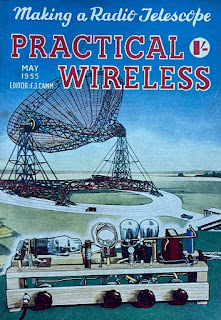On one of our bookshop excursions a few years ago, Mr Howard and I made a pilgrimage to the milieu of the Fifties science fiction writer F G Rayer. We visited the Worcestershire village where he had lived, and searched the local churchyard for his grave, but did not find it, if indeed it was there that his mortal remains rested. There were, however, memorials for several other Rayers who were presumably relations.
We also looked for his farmhouse home, where he wrote his stories and novels, but although we saw some that looked quite possibly his, we did not make a definite identification. The Quest for Rayer was therefore somewhat inconclusive, as such literary expeditions often are, but we did, however, get a sense of the local world in which he had dwelt. There was, for example, a stretch of marshland nearby with a lonely road leading across it, and this certainly had a slightly forlorn air to it.
I had been unacquainted with Francis G Rayer’s work beforehand, but Mr Howard, a connoisseur of early British SF, knew all about him. Rayer was always in poor health from childhood but this did not stop him being an active participant in the emergent futurological scene and a prolific author. He wrote regularly for New Worlds magazine, and published over a dozen SF novels, including his most noted title, Tomorrow Sometimes Comes (1951).
John Clute at The Encyclopedia of Science Fiction concludes: ‘Much of Rayer's work was routine; but his portrayal of 1950s England is evocative, and his bent towards Post-Holocaust and Ruined Earth venues – as in the case of his more famous contemporary, John Wyndham – underlines the pessimistic undertow that characterizes so much UK sf in general.’
However, the energetic and ingenious Rayer also wrote numerous technical books for amateur boffins, such as Electrical Hobbies (1964), Amateur Radio (1967), How to Build Your Own Metal and Treasure Locators (1976), How to Make Walkie-Talkies (1977) and How to Build Your Own Solid State Oscilloscope (1979). I began to wonder whether, somewhere in that quiet village backwater, there might be found his MS work-in-progress on How to Build Your Own Time Machine.
The indefatigable Rayer also wrote articles for radio operator magazines, and a few of these came to light when, some time later, I was browsing at a bookstall in a local village hall flea market, where I found some vintage issues of Practical Wireless edited by F J Camm.
I liked the covers of the periodical and the pictures inside of fearsome looking equipment, and I had a vague idea that perhaps some unexpected authors might write for it, so I bought a few. When I perused them at leisure, sure enough, there were a couple of issues with features by F G Rayer (most of the contributors seemed to favour initials, both before and after their names).
He contributed an article on ‘Radio Controlled Models – Details of Some Crystal Stabilised Control Transmitters’ to the May 1955 issue, which has a picture of the Jodrell Bank observatory on the cover. The article has a forthright beginning: ‘The output of a self-excited transmitter with a given number of valves is greater than that of a crystal-controlled transmitter with the same number of stages, but the latter has the advantage of maintaining frequency accurately’.
Who can doubt it? I ‘m not
sure I know what a ‘self-excited transmitter’ is, although I feel I may have
met a few. We will pass swiftly over the diagram for ‘Two common types of
coupling arrangement’. The article concludes with the admonition that ‘the
meter should not be near a super-regenerative receiver, or a reading may be
obtained from the latter, thereby confusing results.’Super-regenerative', eh? This begins to sound slightly ominous. What exactly is being super-regenerated?
The article by Rayer in another issue concerns how to construct a tuning meter, using only easily available spare parts. Rayer’s technical work appeared around the same time that a new cavalcade of UFO zines were reporting sightings all over the country. I cannot help wondering if there might be some connection. This mysterious instrument was doubtless intended for clandestine extra-terrestrial contact.
It might be a plot in one of his own novels. What if a highly adept SF author, under the guise of harmless electronic experiments for the hobbyist, was really seeding contact points for Other Powers?
(Mark Valentine)

Mark, very neat whimsicality throughout, showing admirable delicacy in addressing--ahem--intimate matters: "We will pass swiftly over the diagram for ‘Two common types of coupling arrangement’.
ReplyDeleteThere's a five-page article on Rayer and his writings in the December 2007 issue of Practical Wireless. The article has been scanned and OCRd by the amazing World Radio History site (worldradiohistory.com), and is available for download as a PDF:
ReplyDeletehttps://worldradiohistory.com/BOOKSHELF-ARH/Author-Groups/F.G.%20Rayer/Francis-George-Rayer.pdf
I came across your blog while searching for information on the very issue of "Practical Wireless" which you featured. It took me back to my teen age years when I was an avid reader of FJ Camm's popular magazine. The picture of the iconic Jodrell Bank radio telescope set me off on a life long career in radio astronomy. Do you still have this issue of "Practical Wireless"? I would like to have a photograph of the cover and any other information pertaining to it, and the article on "Making a Radio Telescope"
ReplyDeleteI recall Rayer being a frequent contributor to the magazine and built various circuits he described, probably including a tuning meter, but for more prosaic purposes than you surmise ...